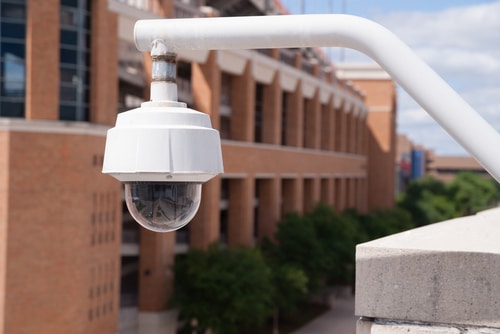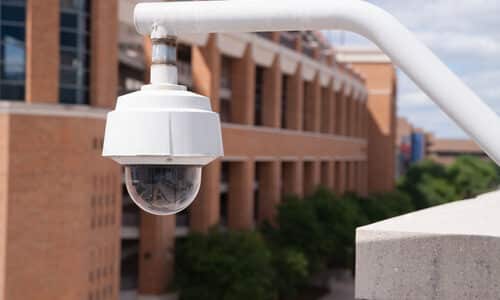
Perimeter Security: Best Practices for Securing Building Entrances and Exits
Perimeter Security: Best Practices for Securing Building Entrances and Exits
Perimeter security is a crucial part of any organization’s security strategy. The ability to secure building entrances and exits not only protects employees and assets but also helps mitigate potential threats from unauthorized individuals. This first line of defence is essential to reducing the risk of criminal activity and safeguarding sensitive information. In this article, we’ll explore the best practices for securing building entrances and exits, using Canadian data to support the importance and effectiveness of these security measures.
Why Perimeter Security Matters
Perimeter security serves as the first line of defence against intruders. According to a report by the Canadian Security Association (Canasa), physical security measures, including those that secure building entrances and exits, account for the majority of security incidents involving physical breaches. In Canada, the impact of security breaches is significant, as the Canadian Centre for Cyber Security states that the cost of physical security breaches, which often start at the perimeter, can be in the millions of dollars for businesses in sectors like banking, retail, and critical infrastructure.
Having an effective perimeter security system is vital to preventing theft, vandalism, and workplace violence. In Canada, the Statistics Canada report on property crime found that 1 in 5 businesses experienced a form of property crime, with break-ins and theft from non-secure access points being one of the leading causes. Properly secured entrances and exits provide an essential barrier against such threats.
Best Practices for Securing Building Entrances and Exits
1. Install Secure Fencing and Barriers
Secure fencing is a primary deterrent against unauthorized access to the property. Canadian security experts recommend fences that are at least 2.5 meters (8 feet) high to effectively prevent climbing. Barbed wire or anti-climb mesh, in combination with robust fences, can significantly reduce the likelihood of an intruder gaining access. In some regions of Canada, like Ontario and Quebec, municipalities require commercial properties to implement these high-security fencing measures to ensure public and property safety.
Canadian Data Insight: According to the Insurance Bureau of Canada, properties with high-security fences and barriers experience 30% fewer break-ins and trespassing incidents compared to those with weak or no barriers. This statistic highlights the importance of secure physical barriers in reducing vulnerability.
2. Implement Access Control Systems
Access control systems regulate entry and exit, ensuring that only authorized individuals can gain access. These systems are integral for sensitive areas within buildings, such as server rooms, financial offices, or manufacturing plants. Access control systems can include:
•Keycards/Fobs: Traditional, cost-effective solutions for monitoring and controlling access.
•Biometric Systems: Advanced solutions like facial recognition or fingerprint scanning provide higher levels of security.
•Smart Locks & PIN Codes: Modern and customizable security for access points.
Best Practice: Multi-factor authentication (MFA) is a key security measure. By combining a biometric system with a physical keycard or mobile credentials, Canadian businesses can ensure a higher level of security.
Canadian Data Insight: A study by Canasa found that businesses using access control systems reduce unauthorized entry by 40%. Additionally, biometric systems, which are becoming increasingly popular across Canada, have been found to lower the risk of fraud and unauthorized access by up to 50%.
3. Use Video Surveillance Systems
Video surveillance is a valuable tool for monitoring building entrances and exits in real time. Modern CCTV systems with HD cameras, night vision capabilities, and remote monitoring options are effective for deterrence and evidence collection. Cameras should be positioned to cover all key entry points, including main doors, side entrances, and parking lots.
Best Practice: Integrating video surveillance with artificial intelligence (AI) and facial recognition software can provide automatic identification of unauthorized individuals, alerting security personnel in real time.
Canadian Data Insight: According to a study by Statistics Canada, businesses that invest in visible video surveillance experience a 60% reduction in criminal activity like theft and vandalism. The same report highlighted that businesses in high-crime areas of Canada, such as Toronto and Vancouver, have seen the most significant benefits from CCTV surveillance.
4. Install Turnstiles and Security Gates
Turnstiles and security gates are effective in controlling access, especially in high-traffic areas. They help prevent unauthorized entry and are commonly used in public spaces like government buildings, airports, and office complexes. Turnstiles also help to eliminate the risk of “tailgating,” where unauthorized individuals follow authorized personnel into restricted areas.
Best Practice: High-security gates equipped with automated locking mechanisms are essential for ensuring rapid response to security threats. These gates can close automatically in the event of a breach or emergency.
Canadian Data Insight: According to the Royal Canadian Mounted Police (RCMP), security gates and turnstiles reduce unauthorized entry by 35%. In cities like Montreal, where there is a high volume of public buildings, security gates have been integral in reducing risks related to trespassing and unauthorized access.
5. Ensure Proper Lighting Around Perimeter
Proper lighting is a key element of perimeter security, as it enhances visibility and deters criminal activity. In Canada, where winters bring long hours of darkness, proper lighting around entrances and exits is even more crucial. Motion-sensor lights and strategically placed floodlights ensure that no part of the perimeter is left in the shadows.
Best Practice: Use LED lighting for energy efficiency and long-lasting illumination. Solar-powered lights are also becoming a popular eco-friendly option for perimeter security.
Canadian Data Insight: According to a report from the Canadian Safety Council, well-lit areas are 50% less likely to be targeted by criminals. In cities like Calgary and Ottawa, municipalities encourage businesses to install sufficient lighting around their perimeters as part of their crime prevention strategies.
6. Regular Security Audits and Maintenance
Even the best perimeter security system requires regular maintenance and periodic audits to ensure its effectiveness. Security systems, including access control systems, video cameras, and physical barriers, can deteriorate over time. Routine audits help identify vulnerabilities and areas that may require repairs or upgrades.
Best Practice: Schedule audits at least twice a year and after any security incident to ensure all systems are functioning optimally.
Canadian Data Insight: According to Canasa, businesses in Canada that conduct regular security audits experience a 25% reduction in security breaches due to early identification of potential weaknesses.
7. Integrate Emergency Preparedness Plans
A comprehensive emergency preparedness plan should complement perimeter security measures. Organizations must be prepared for various threats, including security breaches, fire evacuations, and natural disasters. Clearly marked exits and employee training are critical components of an effective emergency preparedness plan.
Best Practice: Ensure employees are well-trained in evacuation procedures, and regularly conduct fire and security drills to keep everyone prepared.
Canadian Data Insight: The Canadian Red Cross reports that organizations with established emergency response plans have a 70% higher chance of safely evacuating all personnel in the event of a security breach or emergency.
Conclusion
Securing building entrances and exits is essential for protecting assets and people from unauthorized access. By following the best practices outlined in this article, Canadian businesses can enhance their perimeter security and significantly reduce the likelihood of security breaches. With the use of secure fencing, advanced access control systems, video surveillance, and proper emergency planning, organizations can create a safer environment for their employees and safeguard sensitive information.




